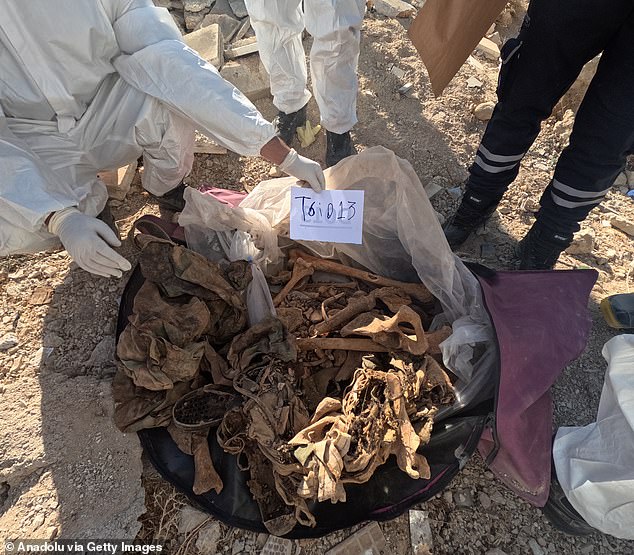Mass graves containing sacks full of human bones have been discovered near Damascus as Syrian locals unearth the horrors of the Assad regime.
A suspected mass grave in the Baghdad Bridge area near the Syrian capital features deep trenches filled with human remains, believed to belong to massacred civilians.
According to a Anadolu Ajansi ReportEvidence suggests that victims were buried there, including those who died from torture and harrowing conditions in prisons such as the famous Sednaya.
Horror images of the discovery show piles of bodies overlapping each other, with bags marked with prison codes and what are believed to be the names of the deceased.
Eight sacks full of human remains were recovered in a deep trench, providing a chilling glimpse of the severity of Assad’s atrocities.
Kurdistan24 claimed that thousands of bodies were found on the Baghdad bridge following a series of mass graves discovered across Syria amid a search and recovery effort following the collapse of the regime.
A local witness told the Kurdish broadcaster: “These are human remains of someone killed by the Syrian regime. These graves contain between five and six thousand corpses.
The witness pointed to a sack labeled ‘Raad Mahmoud, prisoner number 125’ and explained: ‘This body, along with thousands of others, was brought here by the Assad regime. They dug graves and buried them in mass graves.
Human remains found in mass graves near Syrian capital Damascus
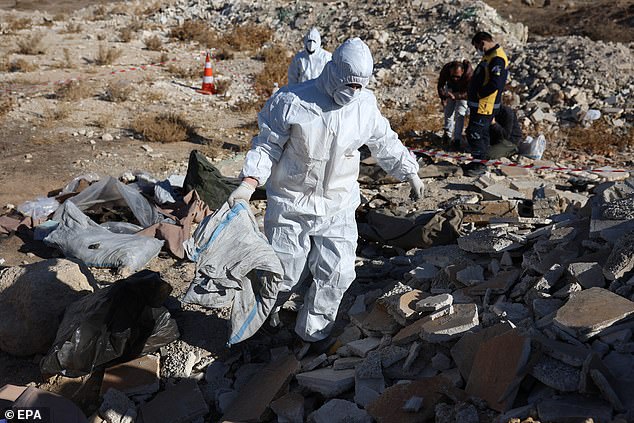
Members of the Syrian Civil Defense group, the White Helmets, work at the site where several bodies and human bones were discovered
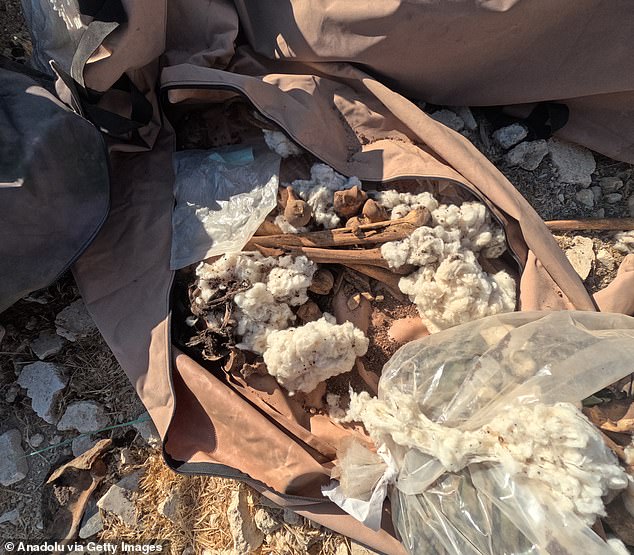
The deep trenches are filled with human remains, believed to belong to massacred civilians.
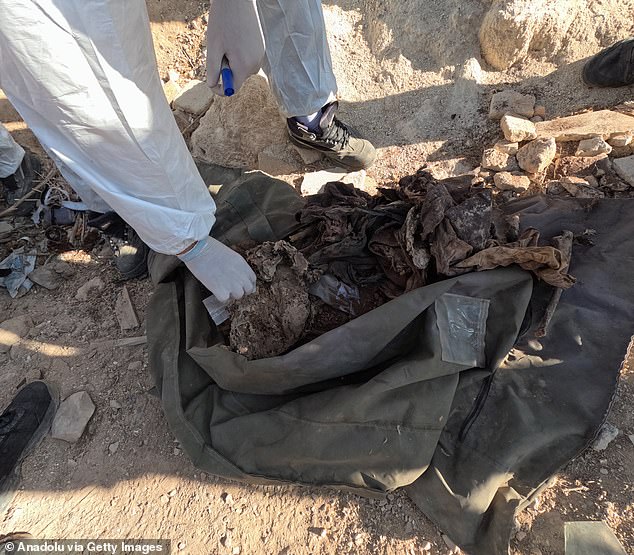
A mass grave was found on the road to Damascus International Airport in the Syrian capital Damascus on December 16, 2024.
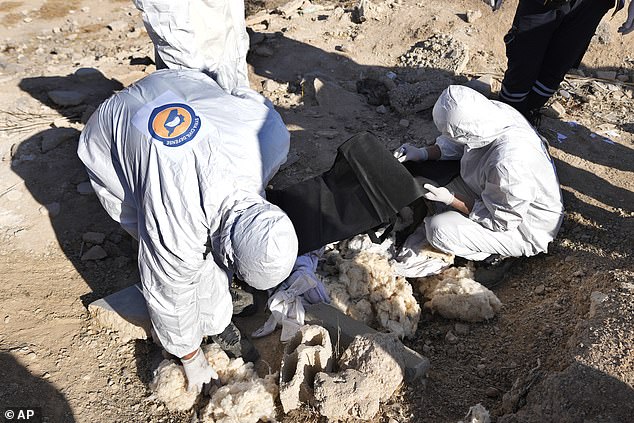
Evidence suggests that victims were buried there, including those who died from torture and harrowing conditions in prisons such as the famous Sednaya.
They then went on to offer a chilling account of the systematic nature of mass burials, stating: “I witnessed the process with my own eyes as the Syrian regime brought corpses here daily in vehicles, dug graves and then buried them.”
The discovery comes as another mass grave was discovered in the Tadamon district of Damascus on Sunday.
Until very recently, brutal killings occurred in Tadamon, with residents reporting regularly seeing Syrian security forces bringing men into the area, hearing bursts of gunfire and smelling burning flesh afterwards.
Journalists in the Syrian district stumbled upon piles of bones along with trash, charred plastic and dirty clothing, and saw children playing with what appeared to be ribs and femurs.
Mohammad al-Darra, an elder from Tadamon, said That year after year, he watched cars driven by the Syrian military carry “tied people” into a small alley parallel to the site where the 2013 Tadamon massacre is believed to have taken place.
‘At night you would hear it. “Every shot hit a man,” he said, and referring to the dirty street and the destroyed buildings next to him, he added, “and this was the cemetery for all the corpses.”
Khaled Houriya, who runs a mechanic shop in the area, said he too had often heard gunshots and smelled burning flesh after returning to the neighborhood in 2019.
‘This was known as Execution Street. “Anyone who came to this street was considered lost,” he said, adding that security forces often asked their neighbors to help them dig mass graves.
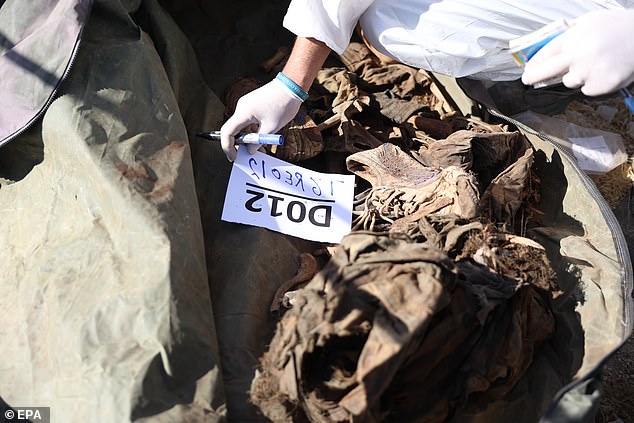
Bags marked with prison codes and what are believed to be the names of the deceased were found.
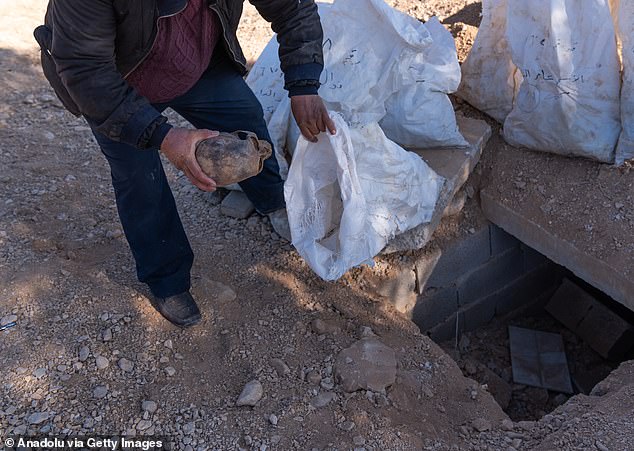
Eight sacks full of human remains were recovered in a deep trench, offering a chilling glimpse of the severity of Assad’s atrocities.
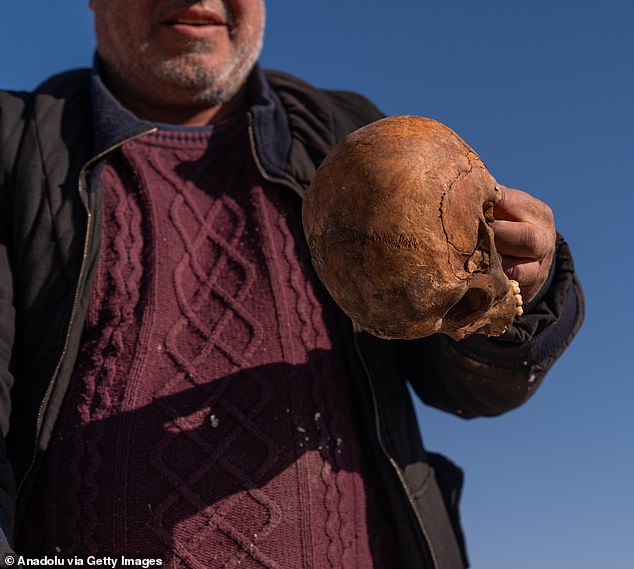
Corpse remains believed to belong to civilians killed by Bashar al-Assad’s regime are being excavated from a mass grave in the Baghdad Bridge area on the outskirts of the Syrian capital.
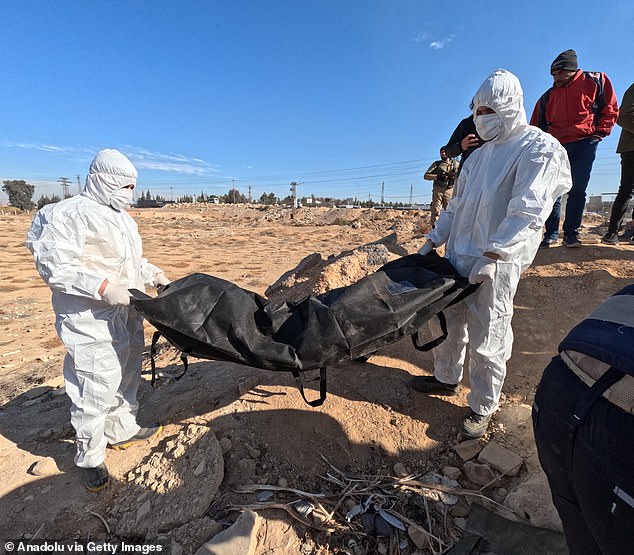
Teams work on the discovered mass grave, which is believed to contain the remains of civilians killed by the ousted Assad regime.
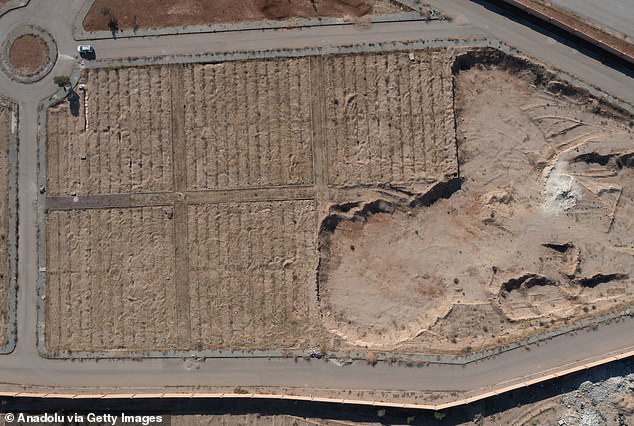
An aerial view of the mass grave as teams work to excavate the bodies of civilians.
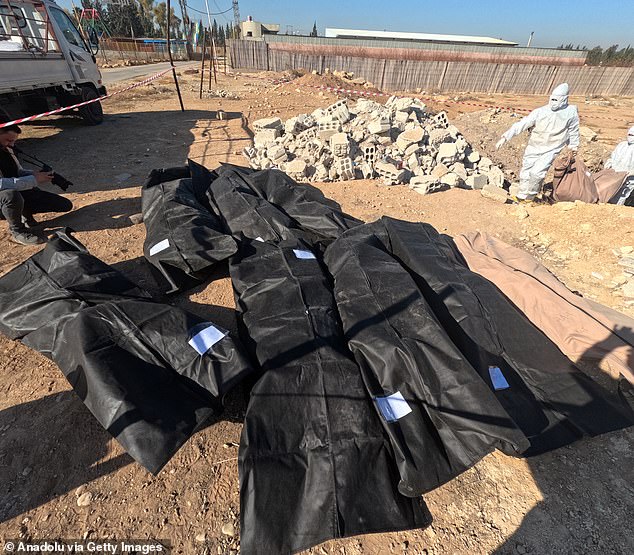
Kurdistan24 stated that thousands of bodies were found on the Baghdad bridge
‘Those things will not disappear from our memory. “Dead bodies all over the ground, it became normal for people,” Houriya said.
The grave is linked to a 2013 massacre captured in a video released in 2022.
Chilling images showed men dressed in military uniforms leading blindfolded people into a large pit, shooting them and pushing their bodies into the grave.
The US State Department said in an April 2022 statement about the video that the massacre “allegedly killed hundreds of Syrian civilians.”
The suspected location of the grave was identified by Human Rights Watch researchers by comparing satellite images with the video scene.
While a complete examination of the place has not yet been carried out, the group has already found many traces of murders.
“We found human remains, bones, part of a skull, fingers, ribs, scattered throughout the area surrounding the mass grave, which shows that much more happened here than we already knew,” said Hiba Zayadin, a Syria researcher at said advocacy group Human Rights Watch.
Tadamon residents said they had not dared to speak out during Assad’s rule, when criticism of the authorities was severely repressed.
‘We couldn’t say anything, otherwise they would burn your house or kill your son. “It was ugly, ugly, ugly,” said one local.
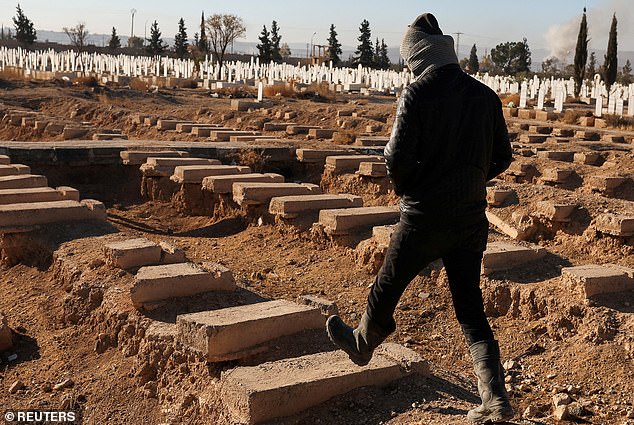
A Tadamon local walks past the site of a mass grave belonging to Bashar al-Assad’s government in Syria.
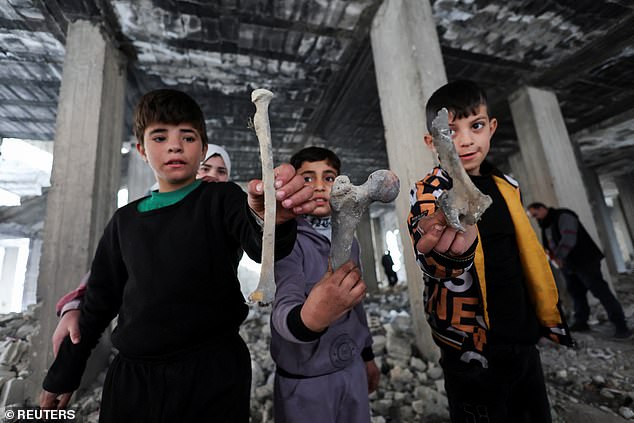
Children hold bones of different shapes found in the Tadamon district, filled with remains of what residents and human rights groups described as years of killings there under Bashar al-Assad’s rule in Syria.
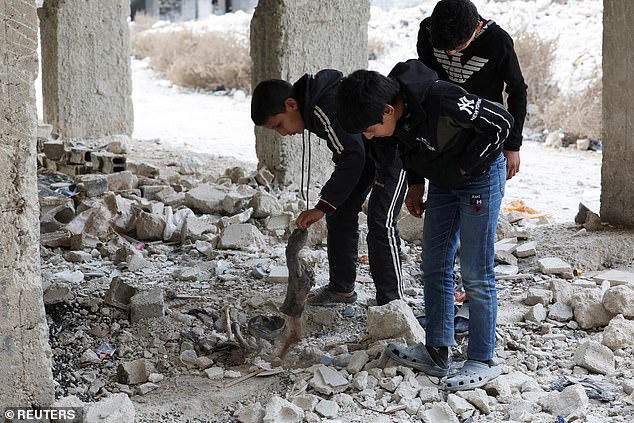
Tadamon residents said they had not dared to speak out during Assad’s rule, when criticism of the authorities was severely repressed.
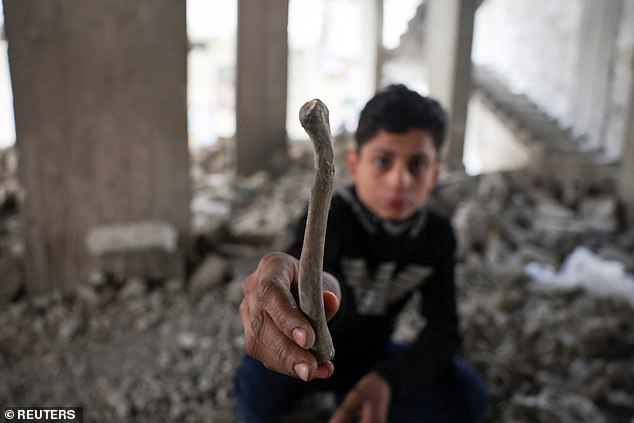
A Syrian boy holds a human bone while playing in the Tadamon district
Hundreds of thousands of Syrians are estimated to have been killed since 2011, when Assad’s crackdown on protests against him led to a full-scale war that drew in regional powers.
Both Assad and his father Hafez, who preceded him as president and died in 2000, have been accused by human rights groups and governments of widespread extrajudicial killings, including mass executions within the country’s notorious prison system.
Assad repeatedly denied any violations and described his critics as terrorists.
But now, a week after the president was overthrown, residents and human rights investigators hope the site can be cordoned off and those responsible for the killings held accountable.
“It is urgent that this place be guaranteed, that the mass grave be exhumed and that the relevant international organizations be allowed unhindered access to this area to be able to carry out this work carefully, cautiously and well,” he stated.
Zayadin said there was a risk that the forces of the ousted Assad government had already emptied the mass grave.
“The families deserve to know what happened here,” he said.

